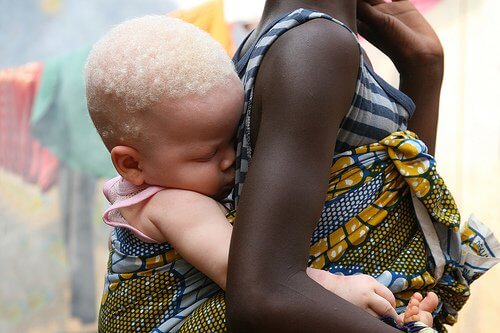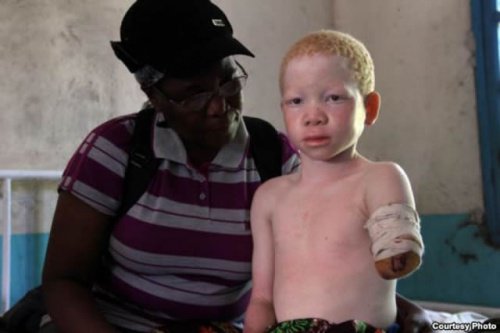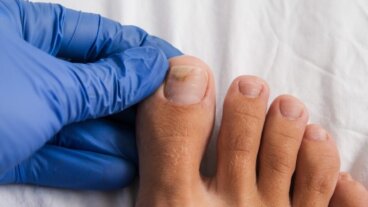Albinism: The Moving Story of Model Thando Hopa


Written and verified by psychologist Valeria Sabater
Albinism can occur in both humans and animals. It’s also a very serious skin condition because the lack of melanin makes your skin highly sensitive to the sun. It’s hard to be albino, but one of the worst areas to have this genetic condition is Africa. Today, we’re going to share the story of Thando Hopa, a young, black model with albinism.
She gives a voice to the harsh reality.
An African model with albinism: Thando Hopa

It turns out, these features were stunning on stages and magazine covers, too. Ms. Hopa is one of the few black albino models in the world.
Perhaps because of her success and experiences, she chose to study law to give a voice to the stigma and social marginalization that takes place in Africa but remains relatively unknown worldwide.
The curse of being born albino in Africa

Experts haven’t been able to uncover the cause of this phenomenon, but they suspect that it has a link to the early European inhabitants of this area during colonialism who often inbred. The rate of albinism is 15% higher in Africa than the rest of the world.
According to Thando Hopa, in Africa, albinism is, first and foremost, a physical problem. Due to the strong sunlight and scarce resources people who suffer from this condition frequently experience skin cancer and blindness. But it can also be a social problem, because albinos often receive scorn from those around them.
Read more:
7 Things You Didn’t Know About Skin Cancer
Albinos are often called “Zeru-Zeru,” which means child of the devil, or ghost. People believe that albinism happens to people because of a curse upon their parents. They see it as a reflection of the parents’ sins, in the ghostly appearance of their child. This leads to social rejection and even abandonment.
Even worse, some people say that a living albino is worthless, but a dead one is as valuable as diamonds. Why? Certain tribes, social groups, and healers in Africa believe that the blood or organs of an albino person have magical healing properties.
In the end, albinism thus can be as deadly as being a rhinoceros or elephant with ivory tusks: people have paid huge to have an albino person mauled or even killed.

Many of these people are murdered. Extraordinary amounts of money are paid for their limbs, blood, or organs, and these heinous acts strike at the very core of humanity and justice.
Learn more:
Thando Hopa: lending her voice about albinism
Albinism in Africa may truly be a curse, which is why people like Thando Hopa are lending their voice to these sufferers, as international organizations attempt to bring the issue into the global spotlight.
This is a particularly severe problem in Tanzania. In spite of their efforts, many albino people die every year – either from these crimes against humanity or from heart problems and other health issues related to their disorder. Sunburns, infection, and cancer some of the main threats to people with this condition.
There are many children who have had to learn to survive without their feet or hands. Yet many of them have never lost their optimism, despite living with one of the worst social stigmas in their society.
All cited sources were thoroughly reviewed by our team to ensure their quality, reliability, currency, and validity. The bibliography of this article was considered reliable and of academic or scientific accuracy.
- Spritz, R. A. (2013). Albinism. In Brenner’s Encyclopedia of Genetics: Second Edition. https://doi.org/10.1016/B978-0-12-374984-0.00027-9
- Mártinez-García, M., & Montoliu, L. (2013). Albinism in Europe. Journal of Dermatology. https://doi.org/10.1111/1346-8138.12170
- Urán, M. E., & Cano, L. E. (2011). Melanina: implicaciones en la patogénesis de algunas enfermedades y su capacidad de evadir la respuesta inmune del hospedero. Infectio, 12(2). http://www.revistainfectio.org/index.php/infectio/article/view/117
- Cruz-Inigo, A. E., Ladizinski, B., & Sethi, A. (2011). Albinism in Africa: stigma, slaughter and awareness campaigns. Dermatologic clinics, 29(1), 79-87. https://www.derm.theclinics.com/article/S0733-8635(10)00140-3/abstract
- Hong, E. S., Zeeb, H., & Repacholi, M. H. (2006). Albinism in Africa as a public health issue. BMC public health, 6(1), 212. https://bmcpublichealth.biomedcentral.com/articles/10.1186/1471-2458-6-212
This text is provided for informational purposes only and does not replace consultation with a professional. If in doubt, consult your specialist.








